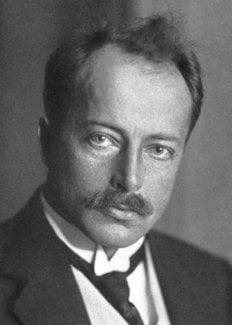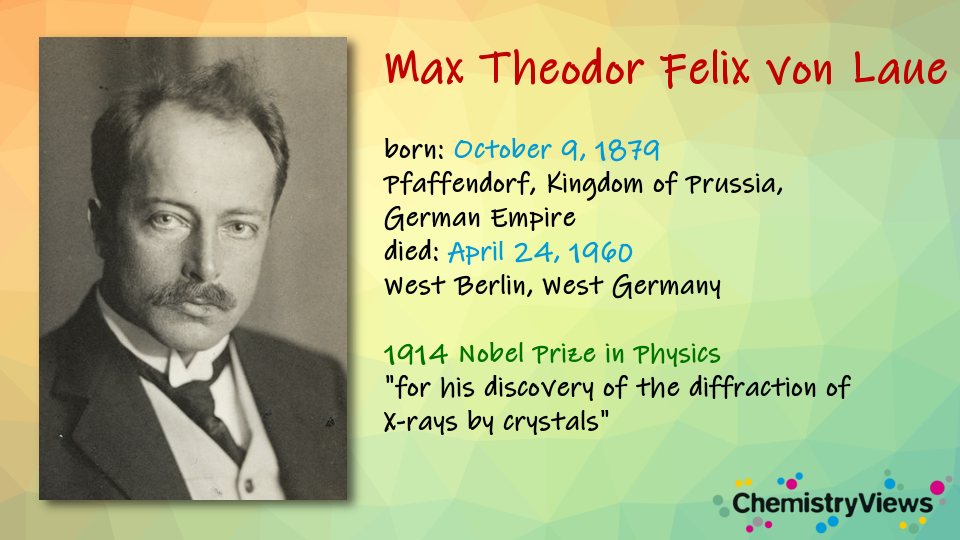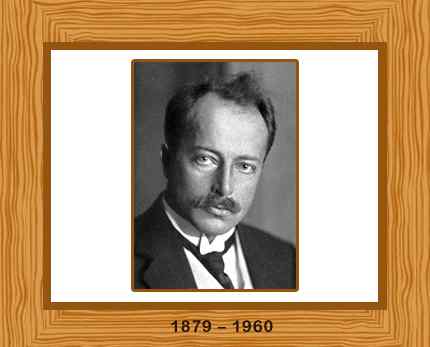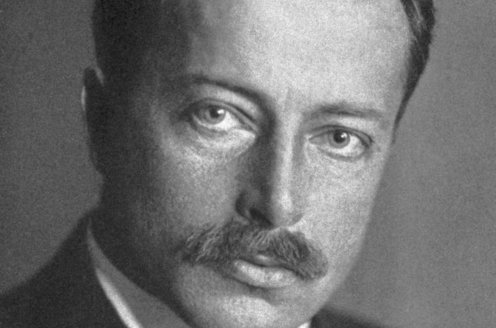The Life and Legacy of Max von Laue: A Pioneer of X-ray Diffraction
Max von Laue is a name that resonates powerfully within the scientific community, especially among those who delve into the realms of crystallography and physics. His innovative work laid the foundation for some of the most pivotal discoveries in material sciences and paved the way for practical applications that have touched various aspects of technology and medicine. Born on October 9, 1879, in Pfaffendorf, near Koblenz, Germany, Max von Laue's journey as a physicist was marked by both brilliance and perseverance, which helped him leave an indelible mark on the scientific world.
Laue's academic journey began in earnest at the University of Strasbourg, where he initially pursued mathematics. However, his interests soon gravitated towards physics, leading him to further his studies at the prestigious universities of Göttingen, Munich, and Berlin. It was during this formative period that Laue became intrigued by the mysteries of electromagnetic waves—a fascination that would later steer him toward his groundbreaking work on X-rays.
The Breakthrough of X-ray Diffraction
Arguably, Max von Laue's most significant contribution came with his development of the X-ray diffraction technique. The early 20th century was a time of rapid advancements in physics, and the discovery of X-rays by Wilhelm Conrad Röntgen in 1895 had revolutionized the way scientists perceived electromagnetic radiation. However, the true nature of X-rays remained a topic of intense debate among physicists. It was Max von Laue who offered a groundbreaking insight into this mystery.
In 1912, Laue theorized that if X-rays were indeed waves, they should be capable of diffraction—a phenomenon that occurs when waves encounter an obstacle or a slit. He posited that crystals, with their periodic structures, could act as a three-dimensional diffraction grating for X-rays. Laue's hypothesis was experimentally confirmed by his colleagues Walter Friedrich and Paul Knipping, who directed X-rays at a copper sulfate crystal and observed the anticipated diffraction pattern. This marked the first practical demonstration of X-ray diffraction, providing incontrovertible evidence of the wave nature of X-rays.
Impact and Recognition
Max von Laue's discovery opened new avenues in the study of solid-state physics and crystallography, facilitating the precise determination of crystal structures. This had a ripple effect across various scientific domains, including chemistry, biology, and materials science. His work laid the groundwork for monumental discoveries such as the elucidation of complex molecular structures, including DNA, by later scientists like James Watson, Francis Crick, and Rosalind Franklin.
In recognition of his pioneering contributions, Max von Laue was awarded the Nobel Prize in Physics in 1914. This accolade not only signified the importance of his work but also reinforced the centrality of X-ray diffraction in scientific inquiry, a tool still widely employed in research and industry today. The ability to peer into atomic structures revolutionized industries, from pharmaceuticals to engineering, affirming Laue's role in transforming theoretical physics into practical applications.
A Resilient Scientist in Turbulent Times
Max von Laue's scientific career was conducted during a period of significant global upheavals, including both World Wars. Despite these challenges, he remained committed to his research and the broader scientific community. During World War I, Laue served as an army officer but continued to contribute to scientific advancements when possible. The interwar years saw him deeply involved in academic leadership, including a professorship at the University of Zurich, and later a critical position at the University of Berlin.
World War II posed significant ethical dilemmas for many German scientists, including Laue. Unlike some of his contemporaries, Laue was a vocal critic of the Nazi regime's policies, especially their stance on "Jewish" physics, which targeted the contributions of Albert Einstein and other Jewish scientists. His outspoken defense of scientific integrity and international collaboration led to conflicts with the authorities, but Laue’s unwavering dedication to these principles earned him respect among peers.
In the difficult post-war era, Laue played a crucial role in the scientific rebuilding of Germany, fostering international collaboration and restoring the country's scientific reputation. As Director of the Max Planck Institute for Physics and later the Fritz Haber Institute, he worked tirelessly to reestablish German physics within the global scientific community, emphasizing the importance of open discourse and collaboration across borders.
Through adversity and triumph, Max von Laue remained a passionate advocate for truth, transparency, and the pursuit of knowledge. His remarkable career offers a compelling narrative of scientific discovery, ethical standards, and resilience—a testament to the enduring impact of his work and values. His story is a reminder of the intersections between science, society, and history, illuminating how the courage and vision of individuals can shape the course of scientific progress for generations to come.
Advancements Beyond X-ray Diffraction
While Max von Laue is celebrated most for his contributions to X-ray diffraction, his intellectual curiosity and scientific rigor extended well beyond this discovery. His work encompassed a wide array of topics within the realms of theoretical physics and quantum mechanics. Among his lesser-known yet significant contributions was his exploration of the theory of relativity.
Laue was an enthusiastic advocate and early adopter of Einstein's theory of relativity, helping to popularize and extend its applications. His early papers and discussions contributed significantly to the broader acceptance and understanding of relativity in Germany and beyond. Laue's work on this subject was highly respected, underscoring his versatility as a physicist and his ability to bridge various fields of study.
A key facet of Laue's intellectual legacy was his contribution to the understanding of thermodynamics within radiation theory. He explored the energy distribution law for blackbody radiation, which further solidified the link between thermodynamics and electromagnetic theory. His insights added a significant layer of understanding to how radiation interacts with matter, providing a comprehensive picture that informed subsequent research in quantum mechanics.
Educator and Advocate for Peace
In addition to his research, Max von Laue was a committed educator who shaped the minds of many aspiring physicists. His roles as a professor at the University of Zurich and the University of Berlin placed him in a position to influence the next generation of scientists. Known for his clear, concise lectures and his deep understanding of complex theories, Laue's teaching style made science accessible and engaging, fostering a deep appreciation for the intellectual beauty of physics.
Laue's influence extended beyond the classroom. Throughout his career, he was a staunch advocate for maintaining peace and international collaboration in the scientific community. During times of political strife, particularly in the lead-up to and aftermath of the World Wars, Laue's voice was a beacon of reason and diplomacy. He believed that scientific inquiry transcended national boundaries and that the collective pursuit of knowledge required cooperation, not conflict.
This dedication to peace and cooperation was pivotal during the tumultuous era of Nazi Germany. Laue was an active member of the Kaiser Wilhelm Society, where he consistently advocated for freedom in scientific research and opposed the exclusionary, nationalistic policies of the regime. His efforts to protect and support persecuted scientists were a testament to his unwavering commitment to the integrity of the scientific process and the individuals who contribute to it.
Laue’s Later Years and Ongoing Influence
After World War II, the landscape of scientific research was undergoing substantial transformation. The devastation wrought by the war required a complete rebuilding of many scientific institutions, particularly in Europe. Max von Laue played a significant role in this rebuilding process, helping to restore Germany's position within the international scientific community.
He took on crucial roles in prominent institutions, assuming leadership positions that allowed him to influence the direction of post-war scientific development. As the Director of the Max Planck Institute for Physics and then the Fritz Haber Institute, Laue fiercely advocated for transnational scientific collaboration. He was instrumental in re-establishing academic connections severed by the war, fostering an environment where dialogue and innovation could flourish once again.
Max von Laue's steadfast commitment to fostering an environment of scientific excellence left an enduring legacy. His work laid foundational principles for future developments in physics, with his methodologies and discoveries continuing to inform emerging research. Even decades after his passing, Laue’s influence can be seen in contemporary physics and engineering practices, where his principles are applied in materials science, medicine, and technology.
His pioneering methods enabled visualization at the atomic level, which continues to play a crucial role in numerous scientific advancements. X-ray diffraction has become a universal tool that supports everything from pharmaceutical development to the study of new materials' properties under different conditions. It is hard to overstate how Laue's insights have superimposed themselves onto the fabric of modern scientific and technological landscapes.
Enduring Legacy
The story of Max von Laue is one of intellectual brilliance intertwined with ethical steadfastness. His work not only catalyzed revolutionary scientific advancements but also embodied the values of a true scientific pursuit—commitment to the truth, resilience against political adversity, and a dedication to educating future generations. These qualities have cemented his place as a key figure in the annals of scientific history, whose contributions continue to inspire and facilitate progress even today.
By examining Laue’s contributions to X-ray diffraction and his broader impact on science, we celebrate not just his achievements, but the philosophy of collaborative inquiry and innovation he championed. His life serves as a homage to the ideals of scientific exploration and stands as a reminder of the remarkable feats that can be achieved through curiosity, integrity, and unyielding perseverance. The legacy Max von Laue left behind is more than a collection of scientific papers; it is a profound reflection of the potential for science to transcend boundaries and effect lasting change.
Challenges Faced by Max von Laue
Throughout his career, Max von Laue faced numerous challenges that tested both his scientific acumen and his personal convictions. His early years in the scientific world were marked by the struggle to gain recognition in a field dominated by towering figures such as Max Planck and Albert Einstein. However, Laue’s persistence and innovative approaches soon earned him respect among peers, ultimately leading to his groundbreaking work in X-ray diffraction.
One significant challenge arose during the Nazi regime in Germany, where Laue’s commitment to scientific integrity placed him at odds with the political climate of the time. The regime's attacks on "Jewish physics" put many German scientists, including those of Jewish descent, at risk of being marginalized or worse. Despite these risks, Laue stood firm in his support for colleagues under threat, often assisting them quietly in finding positions abroad or otherwise ensuring their safety. This resistance was not without consequence; Laue was often under surveillance and faced professional setbacks as a result.
Laue’s opposition to the Nazis also affected his post-war career. When the Allies occupied Germany, there was a keen interest in understanding which scientists had been complicit with the Nazi regime. Laue’s clear stance during the regime stood him in good stead, allowing him to play a vital role in the re-establishment of German scientific institutions. Despite the complicated political landscape of the time, Laue’s staunch dedication to ethical principles and international cooperation ensured his continued influence and respect in the scientific community.
Laue’s Role as a Mentor
In addition to serving as a leading figure in scientific discovery and institution building, Max von Laue was a dedicated mentor to many young scientists. His work with students and young researchers was driven by a belief that the future of science necessitated the nurturing of new generations of brilliant minds. Through his professorships and directorships, Laue influenced an entire cohort of physicists, instilling in them the same rigor and curiosity that defined his own scientific pursuits.
Laue emphasized the importance of independent and critical thinking, urging his students to question established norms and explore new horizons. His mentorship extended beyond technical training in physics, encompassing a broader education in the philosophy and ethics of scientific inquiry. He encouraged his students to consider the implications of scientific advancements and to approach their work with a strong moral compass, a legacy that many of his protégés carried forward in their careers.
His influence as a mentor is evident through the achievements of his students, several of whom went on to make significant contributions to physics and related sciences. Laue's pedagogical philosophy emphasized not only the accumulation of knowledge but also the importance of collaboration and the sharing of ideas—a reflection of his belief in science as a fundamentally communal endeavor.
A Lasting Legacy on Modern Science
The far-reaching impact of Max von Laue's work continues to echo through the corridors of modern science. The technique of X-ray diffraction, for which he is best known, remains indispensable in contemporary research. It serves as a crucial tool in examining the structure of everything from simple metals to complex biological molecules, playing a vital role in fields as diverse as nanotechnology, geology, and pharmacology.
Moreover, the ethical frameworks that Laue advocated for during his lifetime have found renewed relevance as the scientific community continues to navigate challenges related to research integrity, international collaboration, and the societal implications of scientific discovery. His steadfast commitment to these principles serves as a model for scientists today, echoing the necessity of maintaining ethical standards amidst rapid technological and political changes.
The legacy of Max von Laue is also preserved in the numerous institutions, awards, and honors that bear his name, celebrating his contributions and inspiring future generations to push the boundaries of what is known. As scientific inquiry progresses into the next century, Laue’s impact is a foundational element of this journey, underpinning the efforts of scientists striving to unlock the secrets of the physical world.
In summary, Max von Laue’s life and work represent a fusion of intellectual brilliance, ethical integrity, and a dedication to the advancement of human knowledge. His journey exemplifies the transformative power of science when guided by curiosity and ethical responsibility. As we continue to unravel the complexities of the universe, the story of Max von Laue stands as both a tribute and an inspiration—reminding us of the potential that lies in every scientific pursuit, and the values that should guide us along the way.













Comments